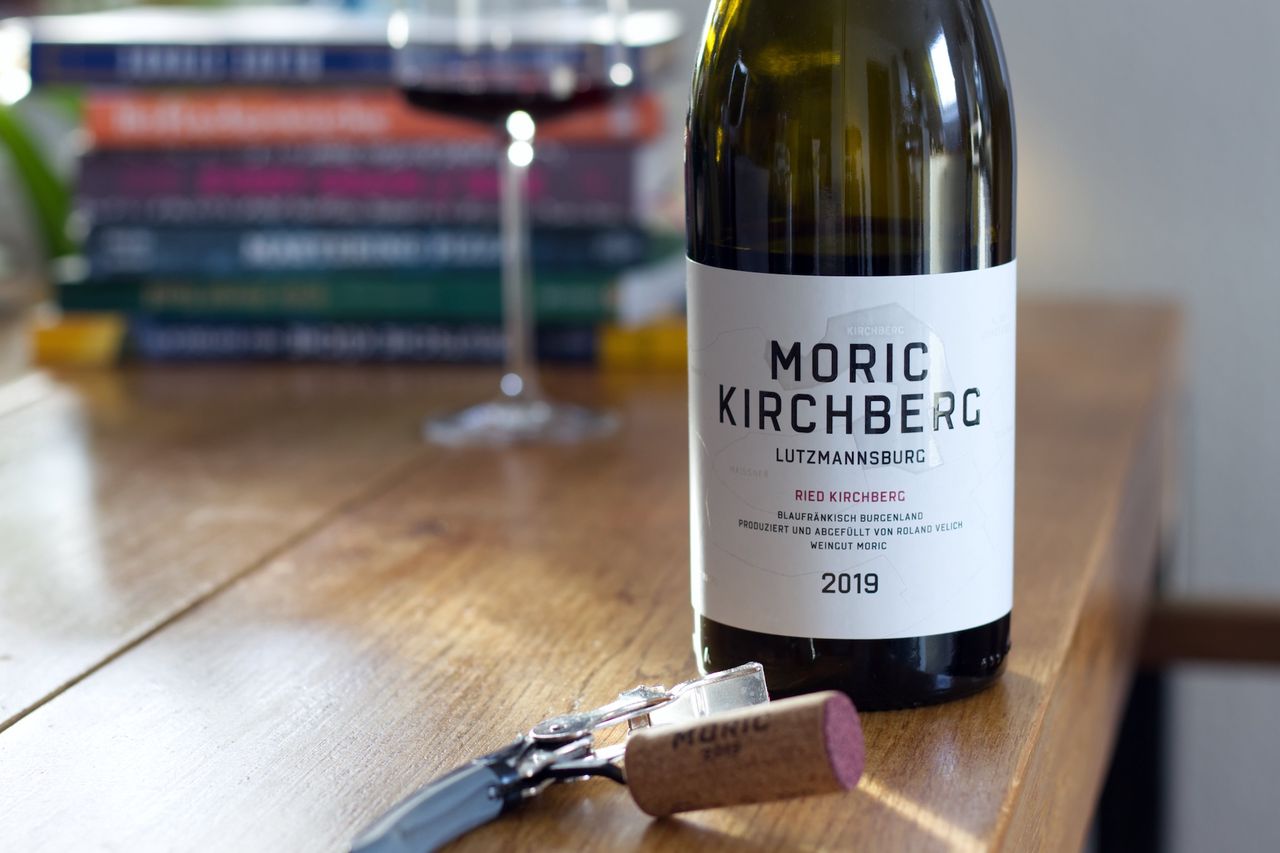Moric - Lutzmannsburg Ried Kirchberg 2019
This week, we're drinking a bottle of Blaufränkisch Lutzmannsburg Ried Kirchberg 2019 from the Moric Winery in Burgenland.

This bottle of wine was somehow inevitable. And it was associated with a lot of anticipation. Those who have visited here before know that I and Lemberger are great friends. While Lemberger from Württemberg had its reputation being pulled down by Trollinger and especially Trollinger with Lemberger, and is now slowly fighting its way back up, Blaufränkisch from Burgenland sounds like salvation to many wine drinkers. It is indeed the case that local winemakers prefer to print Blaufränkisch on the label rather than Lemberger for the sake of sales. We Swabians are well aware that this is all a big misunderstanding and that we produce absolutely fantastic wines here in the region. And yet, or perhaps precisely because of this, I have long wanted to reach for a bottle of Blaufränkisch from the top shelf. This bottle of Lutzmannsburg Ried Kirchberg 2019 from Moric is just that. Admittedly, one could stand on tiptoe and reach a little further up, but first, you can always do that, and second, even the over 60 euros for this bottle, or in the current vintage, over 70, is quite a statement. That’s also why this was an idea in my head for much longer than an actual bottle on the table. But it simply had to be done. If for no other reason than educational ones. Roland Velich decided in 2001 to produce Blaufränkisch under the name Moric, wines that are typical for the region Burgenland and should clearly show their origin. One could probably say that this has worked quite well. If, like me, one is considering drinking a top-notch Blaufränkisch, then the name Moric is always on the list. The Kirchberg vineyard is located south of Lutzmannsburg, almost on the border with Hungary, far in the east of Austria. The vines here, between 40 and 100 years old, grow on soils with a high limestone content. The grapes are spontaneously fermented with a small proportion of stems and then aged in old wooden barrels for two years.
Fortunately, the wine smells exactly as I had hoped. Dense and with a lot of depth, there is plenty of sour and sweet cherry. Perhaps a bit more black than red in the fruit, and behind that, at least as much spice. And if you inhale deeply enough, there’s a hint of glue, a bit of smoke, and old leather far in the background. There’s a lot going on, but it’s all remarkably precise, cool, and elegant. And just as much cherry as when smelling, that’s how much cherry flows over the palate. Tannin at the front, acidity at the back, first pulling the cheeks together and then traveling down the tongue. The tannin is wonderful, scratching the tongue in a very velvety way. Damn, this is really, really good. And what started as cherry slowly becomes more and more berry-like, more and more spicy. I already know from the first moment that I won’t be able to get my nose out of the glass all evening. And that’s exactly what happens.
A large part of the wine will have to wait another night into the third day to be consumed. We were out all Saturday, so we were too tired in the evening. But of course, there must be a small glass on the second day as well. The fruit has changed further. Yes, there’s still cherry. But what was blueberry before is now red currant. The wine has become cooler, more grippy, a bit rougher. It really clings to the tongue now. And because it hasn’t lost any of its elegance or precision, this balance seems even more impressive.
So, day three. I still can’t get my nose out of the glass. It’s less fruity now and more spicy. A bit like Christmas somehow. But not mulled wine, more like stewed plums, cloves, and pepper. There’s also a bit of ethereal character. It smells like something I’d like to eat with waffles. But without a hint of sugar. And then the freshness when drinking. The wine has a brutal pull, is super juicy, and doesn’t cling to the tongue quite as hard as it did the night before. I briefly consider that you should actually put top-shelf Lemberger next to a Blaufränkisch like this. And then I discard this idea for myself again. Because I’m not sure if the direct comparison wouldn’t take away more from both wines in the end than it would benefit my knowledge gain. This kind of direct comparison certainly has its justification, but the way I drink wine here, at my dining table, on my couch, doesn’t require going higher, faster, further. I just don’t feel like it. That’s why I’m not giving any points here either. But maybe it will happen that two such bottles are standing around somewhere completely by chance. Because that would be very exciting, who knows. What I now know for sure is that this bottle of wine is spectacular. And every bit of anticipation was worth it.